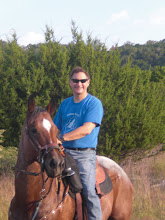
"There are several things that I feel very strongly about.
"One is that "hobbyist" game designers are producing games and game accessories that are just as ground-breaking and note-worthy as those produced by the so-called "professional" game designers.
"Another is that people deserve to be recognized and compensated for their work.
"Which brings me to Red Planet RPG. That game was written in 1990, and updated in 2005 (presumably to add the OGL, accompanying the current version of the game), by Clovis Cithog of Jasoomian Dreams. The cover illustration is by Elton Robb of The Atlantis Blog, with interior illustrations by Kris Todd and Patric Moore.
"While not the first role-playing game to be based on Edgar Rice Burroughs' Martian Chronicles (arguably, that honor goes to TSR's Warriors Of Mars), this early implementation of rules for a Barsoomian role-playing game is equally true to the source material, and will cost you significantly less to purchase.
"For those of you familiar with the John Carter of Mars series, all of the recognizable Barsoomian elements are included: the races (red, green and yellow martians, therns, and black pirates); measurements (tals, xats, zodes, sofads, ads, etc.); weapons (radium weapons, rapiers); fliers; and, monsters (apts, banths, and white apes).
"Red Planet RPG appears to be a very faithful adaptation of the Martian Chronicles, going into great detail regarding the setting, the peoples, culture and history of Barsoom.
"Clovis has elected to utilize both class and skill systems for character generation and differentiation. I have no fatal objections to that approach; after all, that approach is basically how Traveller works, and Traveller is beloved by many old-schoolers. The classes and skills in Red Planet RPG are well-suited for the setting: classes include scientist, trooper, criminal, warrior and priest. The skills are likewise well-suited to a science-fantasy setting, with both fantasy and high technological skills included in the list.
"Red Planet uses six abilities as the basis for character generation. Those abilities (Strength, Agility, Tenacity, Reason, Intuition and Persuasion) are roughly analogous to the six abilities in D&D. Hit points are also employed, along with saving throws and levels. Therefore, those familiar with the basic workings of D&D will have no difficulty grasping and employing this game almost immediately after digesting the flavour and setting of this game.
"The combat system is more elaborate than what you will find in early iterations of Dungeons and Dragons. The combat system includes, for example, four separate critical hits tables, for blunt, energy, piercing and slashing weapons respectively. Though the combat system is a bit more detailed than the one I typically employ,this certainly adds some interesting cinematic (for lack of a better word) elements.
"Red Planet includes spells for Priests, despite the fact that the author acknowledges that most priests in the Martian Chronicles are either frauds or charlatans. But what would a fantasy role-playing game be without spell-casters!
"At 72 pages, Red Planet RPG is a lot of game, packed in a small package. As a hobbyist game-designer and publisher, Clovis Cithog is humble about his creation, and offers it at the bargain price of $10 to US residents. As I said at the start of this review, I feel strongly about trumpeting the remarkable achievements of the hobbyist game designers in our midst, and seeing them fairly compensated for their efforts. This game is a steal at $10. "
http://apaladinincitadel.blogspot.com/2011/02/review-red-planet-rpg.html




























































